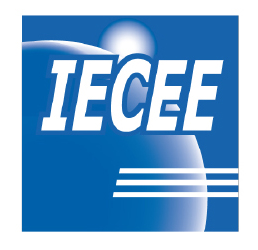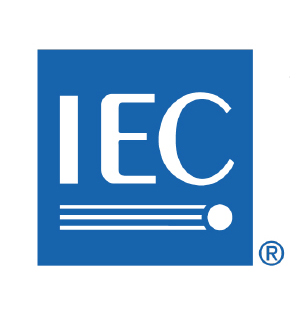WEG DRIVES & CONTROLS - AUTOMACAO LTDA
WEG DRIVES & CONTROLS - AUTOMACAO LTDA
| Address(es) |
|
| Website | Not available |
| Status | MEMBER |
| Acceptance date | 2021-09-24 |
Further information
Stage | Country | Name |
|---|---|---|
2 | Denmark |
LEGEND: Scope Limitations
- RA : Audio amplifiers with audio power > 0,5 Watts excluded
- RC : Apparatus with connection(s) to a cable distribution system excluded
- RSH : Shredders excluded
- RT : Apparatus with connection(s) to a telecommunication network excluded
- RV : CRT (cathode ray tubes)/ picture tubes, plasma/LCD or other video apparatus excluded
- ROUT : Equipment intended for installation outdoors excluded
- RWPT : Wireless power transmitter excluded
Category | Name | Tests/Clauses | Acceptance Date | Responsible National Certification Body |
|---|---|---|---|---|
POW | IEC 60947-1:2020 | 8.2.1- Operating conditions9.3.3.3 -Temperature-rise9.3.3.4- Dielectric properties9.3.3.5-Making and breaking capacities8.2.5- Ability to make, carry and break short-circuit currents8.2.6- Pole Impedance9.3.3.2-Operating Limits9.3.3.6-Operational performance capability9.3.3.7 -Durability9.3.4- Performance under short-circuit conditions9.2.5-Mechanical and electrical properties of terminalsAnnex C- Degress of protection of enclosed contactors and starters9.4- Test for EMC exclusion of 4-8 and 4-118.1.2.2- Glow wire testing | 2021-09-24 | |
POW | IEC 60947-2:2016 | 7.1.1 General Constructional requirements8.3.3.2 Tripping limits and characteristics8.3.3.3 Dielectric properties8.3.3.4 Mechanical operation and operational performance capability8.3.3.5 Overload performance (where applicable)8.3.3.6, 8.3.4.4, 8.3.5.4, 8.3.6.6 Verification of dielectric withstand8.3.3.7, 8.3.4.5, 8.3.6.4 Verification of temperature-rise8.3.3.8, 8.3.4.6, 8.3.5.2, 8.3.5.5, 8.3.6.2, 8.3.6.7 Verification of overload releases8.3.3.9 Verification of undervoltage and shunt releases (if applicable)8.3.3.10 Verification of main contact position (for circuit-breakers suitable for isolation)8.3.4.2 Rated service short-circuit breaking capacity8.3.4.3 Verification of operational performance capability8.3.5.3 Rated ultimate short-circuit breaking capacity8.3.6.3 Rated short-time withstand current8.3.6.5 Short-circuit breaking capacity at maximum short-time withstand currentAnnex A Co-ordination between a circuit-breaker and another short-circuit protective device associated in the same circuitAnnex C Individual pole short-circuit test sequenceAnnex H Test sequence for circuit-breakers for IT systemsAnnex J Electromagnetic compatibility (EMC) –Requirements and test methods for circuit-breakers | 2018-04-11 | |
POW | IEC 60947-2:2016/AMD1:2019 | 7.1.1 General Constructional requirements8.3.3.2 Tripping limits and characteristics8.3.3.3 Dielectric properties8.3.3.4 Mechanical operation and operational performance capability8.3.3.5 Overload performance (where applicable)8.3.3.6, 8.3.4.4, 8.3.5.4, 8.3.6.6 Verification of dielectric withstand8.3.3.7, 8.3.4.5, 8.3.6.4 Verification of temperature-rise8.3.3.8, 8.3.4.6, 8.3.5.2, 8.3.5.5, 8.3.6.2, 8.3.6.7 Verification of overload releases8.3.3.9 Verification of undervoltage and shunt releases (if applicable)8.3.3.10 Verification of main contact position (for circuit-breakers suitable for isolation)8.3.4.2 Rated service short-circuit breaking capacity8.3.4.3 Verification of operational performance capability8.3.5.3 Rated ultimate short-circuit breaking capacity8.3.6.3 Rated short-time withstand current8.3.6.5 Short-circuit breaking capacity at maximum short-time withstand currentAnnex A Co-ordination between a circuit-breaker and another short-circuit protective device associated in the same circuitAnnex C Individual pole short-circuit test sequenceAnnex H Test sequence for circuit-breakers for IT systemsAnnex J Electromagnetic compatibility (EMC) –Requirements and test methods for circuit-breakers | 2021-09-24 | |
POW | IEC 60947-4-1:2018 | 9.3.3.3 - Temperature-rise limits9.3.3.4 – Dielectric properties 9.3.3.5 – Rated making and breaking capacities9.3.3.6 – Conventional operational performance9.3.3.1 and 9.3.3.2 – Operation and Operating limits9.3.5 - ability of contactors to withstand overload current9.3.4 - Performance under short-circuit conditionsAnnex F- Requirements for auxiliary contact linked with power contact (mirror contact)9.3.3.2.1.3 Pole Impedance Annex B | 2021-09-24 | |
POW | IEC 60947-5-1:2016 | Sequence I8.3.3.2- Operating limits of contactor relays8.3.3.3 -Temperature rise8.3.3.4 -Dielectric properties8.2.4- Mechanical and electrical properties of terminalSequence II8.3.3.5.3- Making and breaking capacities of switching elements under normal conditions8.3.3.5.6b -Dielectric verificationSequence III8.3.3.5.6b -Making and breaking capacities of switching elements under abnormal conditions8.3.3.5.6b -Dielectric verificationSequence IV8.3.4-Performance under conditional short circuit current8.3.3.5.6b -Dielectric verificationSequence VAnnex C part 1- Degree of ProtectionAnnex C part 2 – Mechanical and Electrical durabilitySequence VITest for EMC excluding IEC6100-4-8 and IEC61000-4-11 | 2021-09-24 | |
PROT | IEC 60898-1:2015 | 6 Marking8.1.1 General8.1.2 Mechanism9.3 Indelibility of marking8.1.3 Clearances and creepage distances (external parts only)8.1.6 Non-interchangeability9.4 Reliability of screws, current-carrying parts and connections9.5 Reliability of screw-type terminals for external conductors 9.6 Protection against electric shock8.1.3 Clearances and creepage distances (internal parts only)9.14 Resistance to heat9.16 Resistance to rusting9.15 Resistance to abnormal heat and to9.7.5.4 Verification of resistance of the insulation of open contacts and basic insulation against an impulse voltage in normal conditions9.7.1 Resistance to humidity9.7.2 Insulation resistance of the main circuit9.7.3 Dielectric strength of the main circuit9.7.4 Insulation resistance and dielectric strength of auxiliary circuit9.7.5.2 Verification of clearances with the impulse withstand voltage9.8 Temperature rise9.9 28-day test9.11 Mechanical and electrical endurance9.12.11.2.1 Performance at reduced short-circuit currents9.12.12 Verification of the circuit-breaker after short-circuit tests9.12.11.2.2 Short-circuit test for verifying the suitability of circuit-breakers for use in IT systems9.10 Tripping characteristic9.13 Resistance to mechanical shock and impact9.12.11.3 Short-circuit performance at 1 500 A9.12.11.4.2 Service short-circuit capacity (I cs)9.12.11.4.3 Performance at rated short-circuit capacity (Icn)9.12.11.4.4 Performance at rated making and breaking capacity (Icn1 ) on an individual pole of multipole circuit-breakers | 2022-05-09 | |
PROT | IEC 60898-1:2015/AMD1:2019 | 6 Marking8.1.1 General8.1.2 Mechanism9.3 Indelibility of marking8.1.3 Clearances and creepage distances (external parts only)8.1.6 Non-interchangeability9.4 Reliability of screws, current-carrying parts and connections9.5 Reliability of screw-type terminals for external conductors 9.6 Protection against electric shock8.1.3 Clearances and creepage distances (internal parts only)9.14 Resistance to heat9.16 Resistance to rusting9.15 Resistance to abnormal heat and to9.7.5.4 Verification of resistance of the insulation of open contacts and basic insulation against an impulse voltage in normal conditions9.7.1 Resistance to humidity9.7.2 Insulation resistance of the main circuit9.7.3 Dielectric strength of the main circuit9.7.4 Insulation resistance and dielectric strength of auxiliary circuit9.7.5.2 Verification of clearances with the impulse withstand voltage9.8 Temperature rise9.9 28-day test9.11 Mechanical and electrical endurance9.12.11.2.1 Performance at reduced short-circuit currents9.12.12 Verification of the circuit-breaker after short-circuit tests9.12.11.2.2 Short-circuit test for verifying the suitability of circuit-breakers for use in IT systems9.10 Tripping characteristic9.13 Resistance to mechanical shock and impact9.12.11.3 Short-circuit performance at 1 500 A9.12.11.4.2 Service short-circuit capacity (I cs)9.12.11.4.3 Performance at rated short-circuit capacity (Icn)9.12.11.4.4 Performance at rated making and breaking capacity (Icn1 ) on an individual pole of multipole circuit-breakers | 2022-05-09 |



